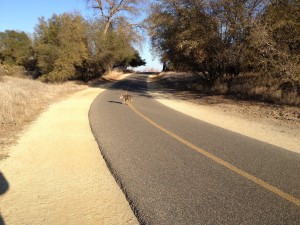When is Property “Public Property” for Purposes of Injury-Related Lawsuits?
WHEN DOES A PUBLIC ENTITY “OWN OR CONTROL” PROPERTY?
When injuries occur on property, plaintiffs (and their attorneys) must determine who has liability for the land in question–and for dangerous conditions on the land which lead to injury.
In order to sue a public or government entity over injuries occurring on public land, the land must be either owned or controlled by a public entity.
Ownership is fairly easy to determine. Inspection of the deed or title to the land will reveal if a public or governmental entity owns the land in question.
The question of control can be more tricky.

WHEN DOES A PUBLIC ENTITY “CONTROL” PROPERTY?
A public or governmental entity “controls” property when the entity has the ability to prevent, remedy, or warn the public about dangers occurring thereon.
The ability to control what happens on land is not, without more, sufficient to establish “control” of the land by a public entity. For example, the government may have the right to dictate how tall a building private people can build on their residential lots, but this does not place the government “in control” of the property for purposes of establishing liability for injuries which occur on private land.
Generally speaking, a public entity is not liable for injuries on property that the entity does not control, even if the entity may have failed to exercise its power to regulate in ways that might have kept the property safe.
ACCEPTANCE OF PROPERTY BY A GOVERNMENT ENTITY MAY CREATE LIABILITY
When a government entity, such as a city or county, accepts responsibility of property for maintenance and control purposes, that formal acceptance may also give rise to liability if people are injured by dangerous conditions on the property. However, if land has not been formally accepted by a government entity, the government may not have liability for failure to remedy dangerous conditions, even if the public uses the property (for access or otherwise). Also, government entities usually do not have liability for injuries occurring on easements which are not owned or controlled by the public entity–for example, utility easements which cross public lands.
Plaintiffs, and those injured on property, should document carefully where the injury took place, especially if the injury occurred on lands open to the public. This specificity may help attorneys and investigators determine whether the injury occurred on public or private land (or on an easement).
***
DISCLAIMER: This article is intended for informational purposes only, does not constitute legal advice to any person or entity, and does not create an attorney-client relationship with any person or entity. The liability of public entities is a complex legal topic, and no single article can provide complete or comprehensive coverage or information about this or any other legal topic or issue. Your personal liability may differ, based on your individual facts and circumstances. If you believe you have a legal claim or issue, or wish to know more about your individual rights, consult an experienced attorney without delay.














